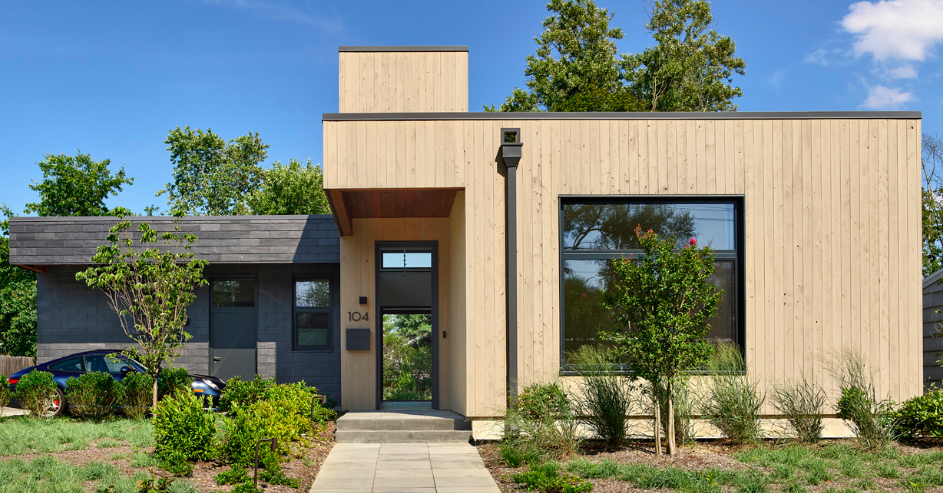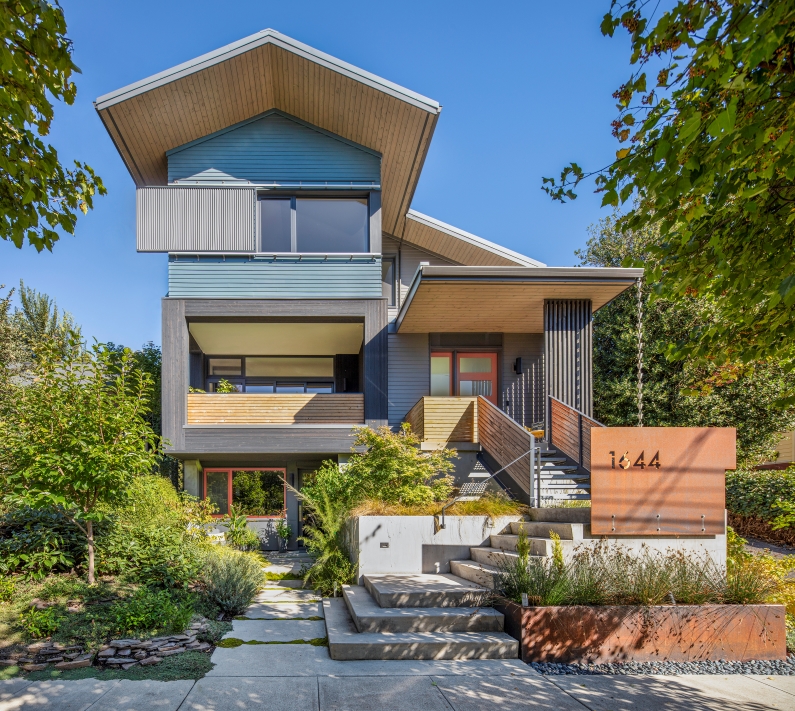
“The modern architectural revolution that took place in the 20th century provided great aesthetic advancements, but in an era of readily available and affordable non-renewable energy, it all but ignored efficient resource management.” —Richard Pedranti
Modern design features often seem at odds with sound building science (the walls of glass alone suggest an energy hog). So when this project by Richard Pedranti Architect came my way, it presented an opportunity to ask and answer the question: How do you strike a balance between modern design and high-performance energy goals?
Located in Spring Lake Heights, New Jersey (climate zone 4), this 1926-sq.-ft. house replaced a tear-down with significant mold issues. It was built within the original footprint and maintained the same scale. The clients sought sleek lines and net-zero performance. To that end, Passive House principles were applied, though they did not seek certification. “Many clients want it all—the Passive House benefits as well as modern design, which means glass walls and double-height spaces—things that, if you were going to optimize the science for Passive House certification and cost-effectiveness, you wouldn’t necessarily do,” Pedranti notes. “But if we engineer and design the proper mechanical system, there may be a small energy penalty but there is no penalty in terms of comfort and health.”

The conflict between science and design
Pedranti lays out a few solutions he devised to address obstacles to achieving the desired aesthetic—and the clients’ wish list—with the performance objectives. One of the biggest challenges was the 25-ft.-wide by 10-ft.-high sliding retractable glass wall at the rear of the house. His answer was to spec Bildau and Bussman aluminum-clad wood triple-pane tilt-turn windows. Air-tight installation, thermally broken frames, and proper shading were key. “It’s a matter of using the best glass possible, understanding the shading requirements,…
Weekly Newsletter
Get building science and energy efficiency advice, plus special offers, in your inbox.

This article is only available to GBA Prime Members
Sign up for a free trial and get instant access to this article as well as GBA’s complete library of premium articles and construction details.
Start Free TrialAlready a member? Log in









One Comment
what brand closed cell spray foam was used?
Log in or become a member to post a comment.
Sign up Log in